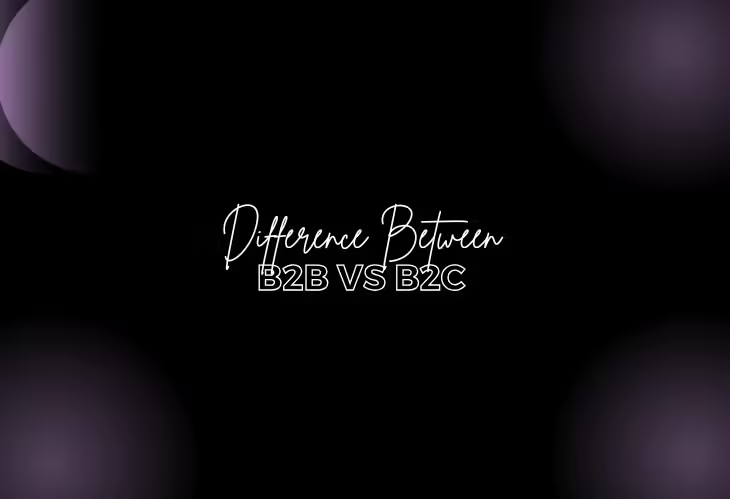The Cambridge Dictionary defines branding as “the law and the law that provides specific designs or symbols to promote products and services.” Until recently, this was a reasonably accurate explanation of branding, at least, and there was a consensus at the time.
Branding was misunderstood (and still) for reducing his aesthetic elements of Visual Identity. For many, whether specialists or not, branding is just visual identity—especially the concept of brands and their understanding, which has developed very much over the years. However, branding is the same old vision of high-ranking marketers. It’s been preached.
The brand is important because it not only gives consumers an unforgettable impression but also lets customers know what to expect from your company. This is a way to clarify how to make what they offer better than their competitors. Your brand truly expresses who you are as a company and how you want to be recognized.
The brand is being developed in many areas, including advertising, customer service, social responsibility, reputation, visuals, and more. These elements (and many more) work together to create a unique (hopefully) high-profile profile.
What is Branding?
If the explanation of branding is simple, then there is not much ambiguity or dissonance related to the concept. A strong understanding of branding requires a good understanding of the company, marketing, and even (human) relationship foundations. Branding is such a great concept that you can’t clarify the topic. To reduce the spread of outdated, false, and incomplete information about branding, we provide our stakeholders with a comprehensive awareness of the brand.
Comparing this definition with Cambridge’s official definition, it is clear that the latter (Cambridge) provides more information on the surface level and gives readers a false understanding. This may be why most people believe the definition is correct and choose the basis for knowledge formation on this topic. It’s just a definition that learns about the branding location and reduces it to the element (visual identity), which reduces other concepts related to the brand as he tries to connect the points.
The definition of branding makes the concept wiser, even if it is clearly vaguer than the others, when its meaning becomes deeper. This is a rough breakdown:
Permanent Process
Branding is an eternal process because it never stops. People, markets, and businesses are constantly changing, and brands must develop further to keep up with their progress.
Identify, create, and manage
There is a brand structured process. First, you need to identify who you want to be with your stakeholders. Everything will always affect your positioning.
Cumulative assets and promotions
positioning should be translated into assets (visual identity, content, products, advertising, etc.) and actions (services, customer support, relationships, experience).
Recognition of brand
, also known as reputation. This connection occurs when a person (either a customer or not) is related to your brand. This perception results from the branding process (or its absence).
Stakeholder
Customers are not the only ones who build brand awareness in their heads. Stakeholders include possible customers, existing customers, employees, shareholders, and business partners. Everyone builds their perceptions and interacts with the brand accordingly.

Why is Branding Important?
Branding is very important for businesses due to its general impact on the company. It can change how people perceive their brand, promote new business, and increase its value, but the opposite can happen if it’s wrong or not done at all.
Let’s clarify something
Calls build on whether the company is doing something about it or not. The results will also be well received. Understanding and using branding only means taking over the reins and trying to control what this call looks like. For this reason, we recommend that you consider branding from the start.
Unlike the general opinion, branding is not an “expensive marketing strategy that uses only large brands.” On the contrary, branding has a lot to do with common sense and is strongly influenced by your market and the level you want to play. Branding includes a consistent combination of different skills and activities, so the costs can be significantly differentiated to the case. A high-level and perfect implementation consultant will, of course, be more expensive than anything in them. For example, ending an international company with several products can create much more challenging resources. There is no uniform approach.
Increase in branding Increase in business value
Brands are important when trying to generate future business, and highly established brands will increase the value of the company by giving it more leverage in the industry. You can do it. This makes it a more attractive investment option with a well-established location in the market.
The results of the branding process are brands that contain the values associated with the call. A strong reputation means a strong brand, which leads to value. This value means an impact, a price bonus, or a form of mind. This brand has financial value in itself and is a business coherence that requires you to have a unique place in the balance of the company to increase the total value of the company. This is a controversial topic and a challenging task for many businesses, but giving the brand financial weight is also important, just like the brand itself. This is called “brand evaluation.”
Branding generates new customers.
Great brands have no issues with the transfer business. Strong branding generally means that the company has a positive impression among consumers. They are familiar with and assume the reliability of using names that you can trust, so they will probably do business with them. As soon as the brand is fully established, word of mouth becomes the company’s best and most effective advertising technology.
As soon as a specific perception of a brand is established in the market, an uncontrolled chain of spread begins. Mundpropaganda communicates awareness of the brand’s reputation and further strengthens it. If the call is positive, potential new customers may come into contact with the brand and already have a positive association in mind, making them more likely to buy this brand than they do from the competition.
Improves Employee Pride and Satisfaction
When employees work for a strong branded company and are actually behind the brand, they increase employee pride and satisfaction. You will be more pleased with your job and will be more proud of the work you do. I work for a publicly appreciated brand and highly values the company’s work.
As mentioned previously, brand stakeholders are not just customers but employees as well. We must note that human interaction is the basis of trade and that employees are the first ambassadors, the first line of communication for all brands. Employees working with the brand will maintain this awareness with their customers and interacting partners below. This can lead to better leadership, commitment, and products and services. The reputation of the brand generates trust in the market is the amount of trust that customers can have. The more you trust a brand, the better your perception, the stronger your reputation, and the stronger the brand itself.
Hire a team of expert marketers to handle
Just because a marketing strategy worked for one project doesn’t mean it will always work. At Mozo, we believe that every business is unique, and your marketing strategy needs to be just as adaptable. People’s behaviors, preferences, and trends evolve constantly, and to stay ahead, your strategy must be flexible.
Ready to grow your revenue with Mozo? Get a Free Consultation to Boost Your Business.





